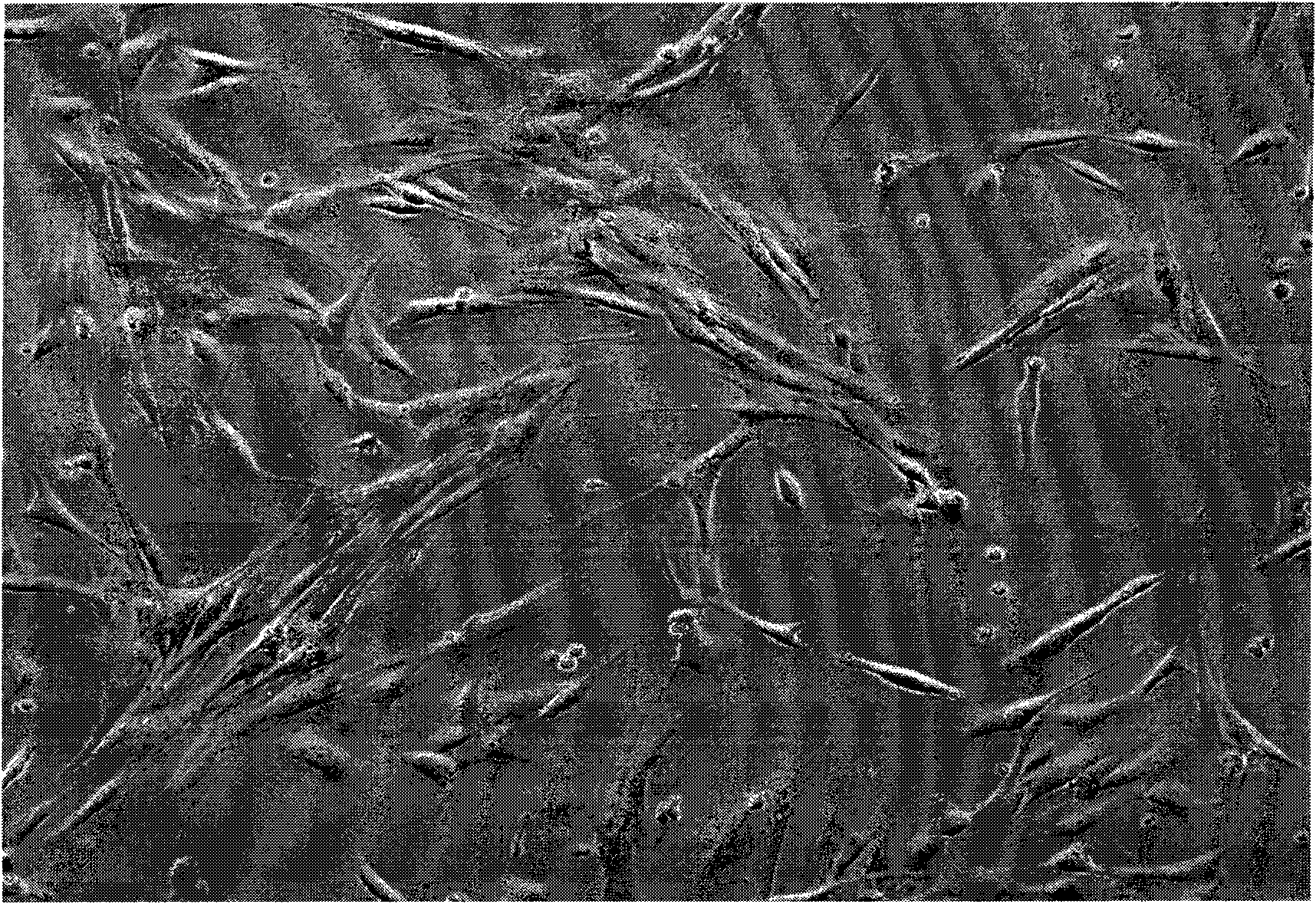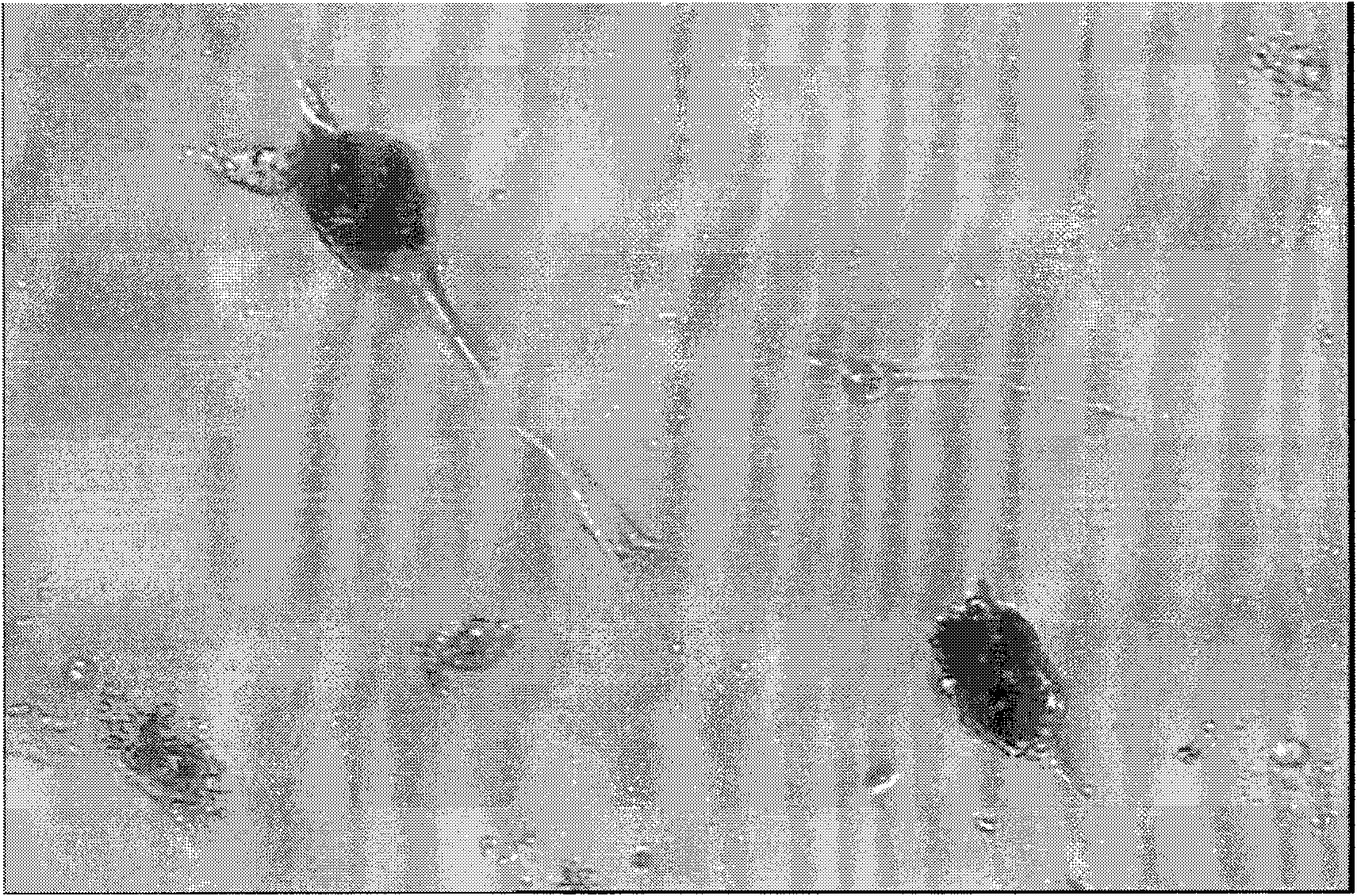Method for inducing the differentiation of mesenchymal stem cells of human embryo livers into islet beta-like cells and stably expressing insulin and special induced liquid thereof
A technology of mesenchymal stem cells and cell differentiation, applied in the field of induced stem cell differentiation, can solve safety problems and other problems, and achieve the effect of avoiding biological safety problems
- Summary
- Abstract
- Description
- Claims
- Application Information
AI Technical Summary
Problems solved by technology
Method used
Image
Examples
Embodiment 1
[0028] Example 1 Inducing human fetal liver mesenchymal stem cells to differentiate into islet β-like cells
[0029] (1) Isolation, purification and expansion of human fetal liver mesenchymal stem cells: rinse the fetus with sterile normal saline, cut off the umbilical cord and place it in a large beaker, soak it in 75% alcohol for 5 minutes, and place it in an ultra-clean Taichung Take out the fetal liver aseptically, wash the blood several times with PBS, cut off the capsule, cut the remaining liver tissue into small pieces, absorb the Hank solution containing 2% (volume fraction) FCS with a sharp-nosed pipette, wash the liver tissue, and collect the liver tissue suspension into 50ml Or in a 15ml sterile centrifuge tube, blow the pipette repeatedly to separate the cells, centrifuge at 50×g for 5 minutes, the pellet is the hepatic parenchymal cells, take the supernatant and transfer it to another centrifuge tube (to remove the hepatic parenchymal cells), and centrifuge at 500×...
Embodiment 2 Embodiment 1
[0031] Example 2 Identification of the islet-like cell mass obtained in Example 1
[0032] (1) Morphological changes of cells before and after induction: figure 1 Is the morphology of uninduced hFL-MSCs seen under an inverted microscope. figure 2 It is the morphological diagram of islet β-like cell clusters seen under an inverted microscope after 10 days of induction. From figure 1 It can be seen that the uninduced MSCs are long fusiform and arranged in parallel; from figure 2 It can be seen that hFLMSCs induced for 10 days aggregated into islet-like cell clusters.
[0033] (2) Dithizone (DTZ) staining:
[0034] Take the islet-like cell mass obtained in Example 1, wash it twice with PBS, add 5ml PBS and 50μl dithizone working solution (V / V, 1%), incubate at 37°C for 10 minutes, observe and take pictures under an inverted microscope.
[0035] The cytoplasm of pancreatic β-cells is rich in zinc ions, which are essential components for the formation of 2-zinc-insulin hexam...
Embodiment 3
[0044] Example 3 Transplantation experiment of pancreatic islet β-like cells obtained by this method under the capsule of mouse kidney
[0045] Physiological saline, uninduced hFLMSCs and islet β-like cells induced for 10 days were transplanted under the renal capsule of diabetic mice. Observe the effect of different cells on the blood sugar level of diabetic mice after transplantation. Figure 8 It suggested that the blood glucose of diabetic mice decreased significantly after transplantation of islet β-like cells, and it could be maintained for a long time, while normal saline and uninduced hFLMSCs had no hypoglycemic effect on diabetic mice after transplantation.
PUM
 Login to View More
Login to View More Abstract
Description
Claims
Application Information
 Login to View More
Login to View More - R&D
- Intellectual Property
- Life Sciences
- Materials
- Tech Scout
- Unparalleled Data Quality
- Higher Quality Content
- 60% Fewer Hallucinations
Browse by: Latest US Patents, China's latest patents, Technical Efficacy Thesaurus, Application Domain, Technology Topic, Popular Technical Reports.
© 2025 PatSnap. All rights reserved.Legal|Privacy policy|Modern Slavery Act Transparency Statement|Sitemap|About US| Contact US: help@patsnap.com



